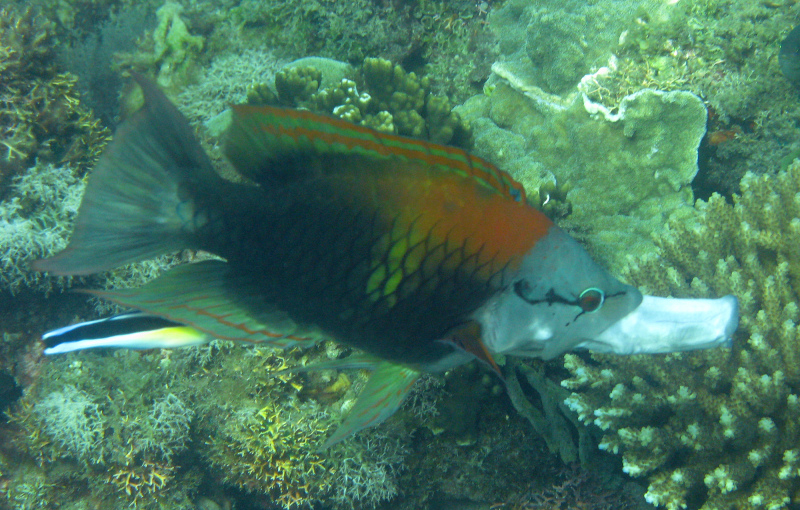�
�
�
���
Epibulus insidiator
Slingjaw Wrasse
Kingdom
Animalia
Phylum
Chordata
Class
Actinopterygii
Order
Perciformes
Family
Labridae
Genus
Epibulus
Species
Epibulus insidiator
Colours
Distinguishing features
Distinguishing features still need to be specified.
Size
- Up to 54 cm (Standard Length)
Depth range
- From 1 m to 42 m
Synonyms
Interesting facts
- This fish uses the “jaw-ram” to catch its food. It expands its mouth so rapidly that it creates a vacuum and sucks in its prey. This technique is common among fish but the Slingjaw Wrasse has the most extreme jaw protrusion of all fishes throughout all history. It is so fast that if you were the same size, sitting at one of those long tables with ten people on it and this fish was at the other end, she could easily swallow your dessert without you seeing her do it.
Distribution
Distribution and habitat preferences
Inhabit coral-rich areas of lagoon and seaward reefs (FishBase).
Behaviour
Catch their prey by exploiting the remarkable extent to which their lower jaw can protrude.
Web resources
References
- Arnal, C. (2000). Ecologie comportementale de la symbiose poisson nettoyeur/ poisson client: motivations et honnêteté, Ph.D. thesis, University of Perpignan, France. LIRS catalog number 637.
- Arnal, C., O. Verneau and Y. Desdevises (2006). Phylogenetic relationships and ecolution of cleaning behaviour in the family Labridae: importance of body colour pattern, Journal of Evolutionary Biology, 19: 755-763. LIRS catalog number 1178.
- Bellwood, D.R. and P.C. Wainwright (2001). Locomotion in labrid fishes: implications for habitat use and cross-shelf biogeography on the Great Barrier Reef, Coral Reefs, 20: 139-150. LIRS catalog number 787.
- View all references










